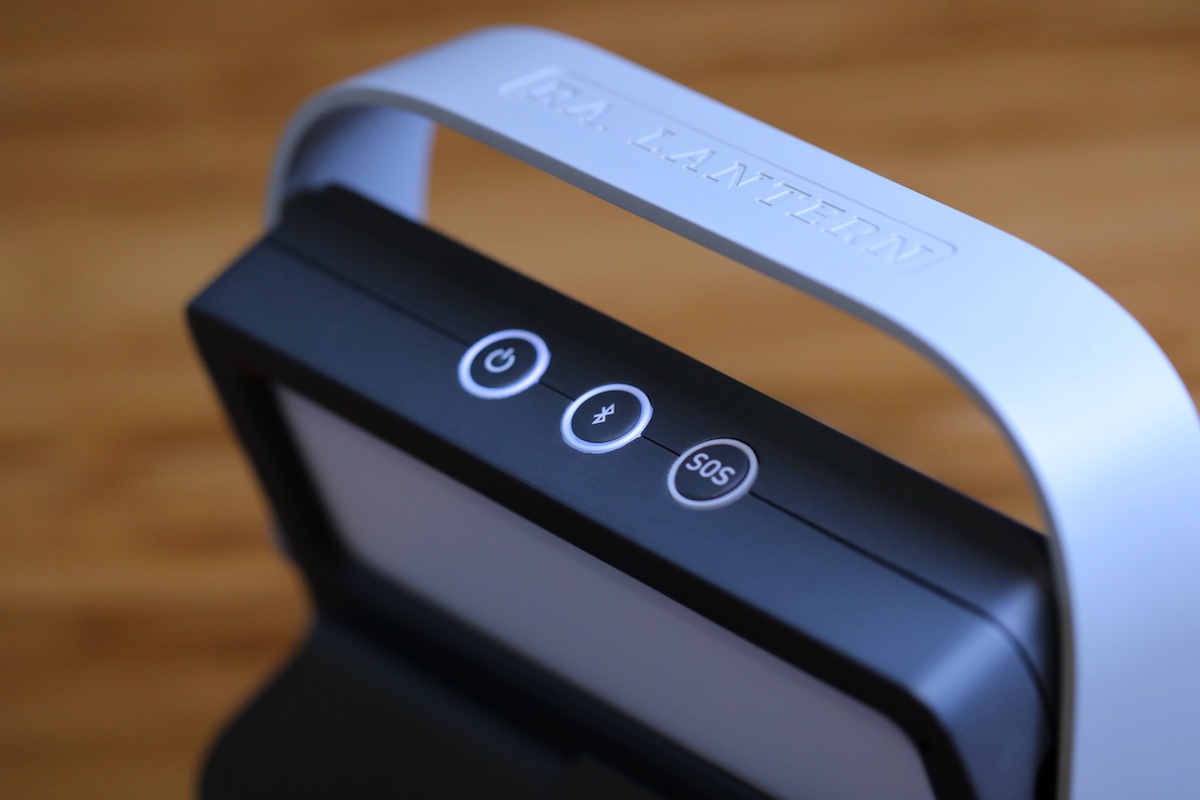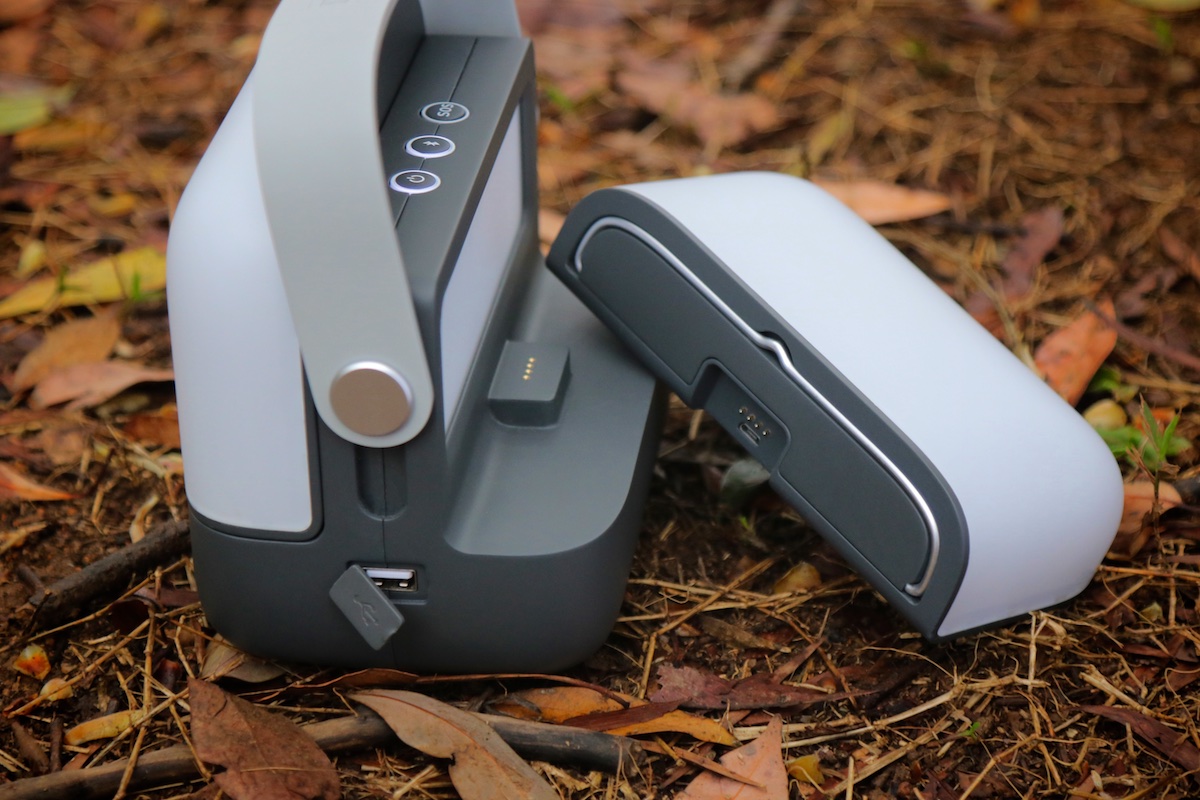At first glance, the Ra. Lantern appears to be a powerful source of light similar to many lanterns on the market. It’s capable of putting out as much as 500 lumens of light on its brightest setting and even comes equipped with a handle making it easy to carry around. Upon closer inspection, however, it becomes clear the device actually features several different parts, including the Ra. Core base unit and two detachable light panels.
Since each of these panels also emits up to 500 lumens of light, campers have the option to take one with them while finding their way in the dark. But the individual modules also do a lot more than simply illuminate a trail. For instance, it allows them to connect an iOS or Android device to the Ra. Lantern via Bluetooth, enabling them to use the modules to create a wireless network allowing them to stay in communication with others up to a mile away — even when a cell network doesn’t exist.
The Ra. Core serves as a base station of sorts and facilitates sending text messages via a special app. This same app allows users to also track each other’s whereabouts using the GPS chips located in their connected smartphones. It also features an onboard radar system which creates a protective mesh surrounding the campsite. The device’s radar module is able to detect movement from up to 30 feet away and then send a notification to users if anyone (or anything) draws near. Should that happen, the lantern also begins to blink rapidly in an effort to scare errant creatures away.
The device draws its power via a rechargeable lithium-ion battery which boasts a 45,000 mAh capacity. In other words, that is enough to keep the lantern illuminated for up to 50 hours. The Ra. Core unit also comes equipped with two USB ports to keep mobile devices, tablets, digital cameras, and other gadgets charged. According to the Kickstarter page, the lantern recharges an iPhone up to 12 times, or an iPad as many as three times, before requiring its own recharge.
The designers of the Ra. Lantern seek $80,000 to get this product off the ground and, as of this writing, sit a little over a quarter of the way to that goal with just over $22,000 raised. If the crowdfunding efforts prove successful, the device plans to go into production in June before shipping in July. It’s expected to carry an MSRP of $298, although early-bird supports have the ability to pre-order one now for $129.









